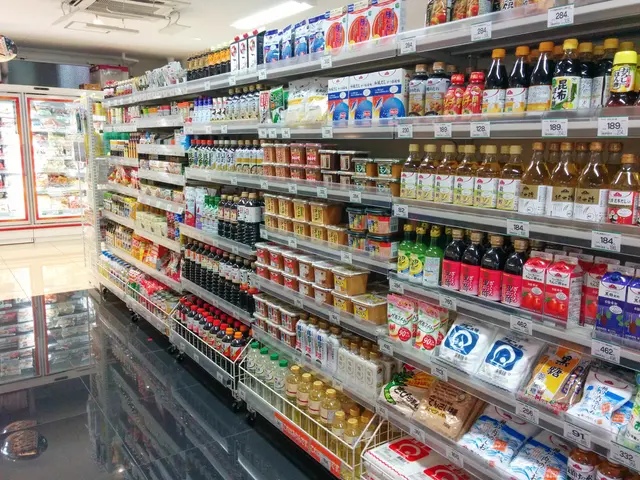Billionaire Footwear Empire: The Rise of Shoe Carnival and Its Continued Growth
Playing a game-changer: Shoe Carnival revamps its game, scoring big with customers
Mark Worden, new at the helm, snapped up the reins in September, and he's vowing the footwear retailer will up its game significantly. "We're transforming from a traditional, basic, average store experience to the most differentiated customer experience," he proclaimed.
Ditching the traditional value shop style, Shoe Carnival is focusing on unique offerings and stellar customer service—a rarity in the value shoe market. The new strategy isn't just about store makeovers, it's about attracting customers back to brick-and-mortar shops.
The revamped stores have reaped rewards, as Shoe Carnival's "Shoe Perks" loyalty program expanded a whopping 10% year over year, totaling over 28.5 million members. For nine months ending October 30, net sales exceeded a billion dollars, bouncing back from last year's $722.9 million dip. The company boosted its annual outlook to about $1.29 billion, just shy of its prediction.
In these modernized stores, carpets make way for gleaming floors and interactive digital stations. Pop-ups showcase popular brands, and comfortable seating areas break up the monotony of shoe displays. At the same time, the retailer offers both self-service and personalized assistance for customers who need it, unlike many competitors who focus primarily on cost-cutting.
Shoe Carnival isn't just about store remodels—it's exploring expansion opportunities and acquiring rivals. After shedding some underperforming stores, the company is now eyeing growth, anticipating net store openings in 2022 primarily in established markets. In December, Shoe Carnival made a significant move, acquiring family-held Shoe Station for $67 million, adding 21 stores in the Southeast to its roster of 377 locations across 35 states and Puerto Rico.
Malls may not be so happy about the shift, as Shoe Carnival prefers open-air locations. However, the retailer has managed to weather the pandemic with the help of vendor relationships and a loyal customer base.
The company learned during the pandemic that customers were willing to pay full price for the right shoe—hence the death of BOGO promotions. Gross profit margin is now topping 40%, up 840 basis points from last year's 32%.
Nevertheless, Shoe Carnival isn't entirely in the clear. New pandemic waves could upset retailers, particularly those relying heavily on brick-and-mortar like Shoe Carnival. However, Worden believes the retailer's customer relationships will hold, as long as Shoe Carnival keeps pushing its transformation efforts. His big challenge? Converting newly acquired customers into repeat buyers.
The company's push for growth primarily revolves around acquiring new customers and taking market share. With a focus on customer service, modern store designs, and trend-driven products, Shoe Carnival hopes to transition from a struggling traditional footwear retailer into a national leader in stylish, premium footwear with an enviable profit margin and stronger consumer loyalty.
Enrichment Information:Shoe Carnivals' transformation centers on a multi-faceted strategy to elevate the customer experience, modernize stores, and expand its loyalty programs. This strategy encompasses a major rebranding effort by converting stores to the Shoe Station brand, aimed at the premium footwear market. By 2027, more than 80% of stores are projected to operate as Shoe Station, 28% more than initially planned. These efforts require substantial investment but are expected to yield long-term benefits. Loyalty and customer engagement play a significant role in the company's strategy through targeted marketing, enhanced store experiences, and geographic expansion. The overall goal is to reposition Shoe Carnival as a dominant force in the premium footwear market with superior margins and stronger customer loyalty.
- Worden, the new CEO of Shoe Carnival, aims to transform the traditional footwear retailer into a national leader in stylish, premium footwear with an enviable profit margin and stronger consumer loyalty.
- Shoe Carnival's strategic move includes expanding its loyalty programs, modernizing store designs, and focusing on customer service to attract customers back to brick-and-mortar shops.
- In the context of the pandemic, Shoe Carnival learned that customers were willing to pay full price for the right shoe, resulting in an increased gross profit margin of over 40%.
- Envisioning growth, Shoe Carnival is exploring expansion opportunities, acquiring rivals, and transitioning stores to the Shoe Station brand, which caters to the premium footwear market, in line with its vision to dominate this sector by 2027.








